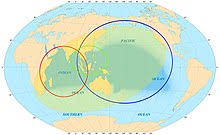Regions are not permanent entities — their names and boundaries change. The concept of the Asian region has evolved over time due to strategic, economic, and cultural drivers, leading to its classification into different concepts such as ‘Asia Pacific’, ‘East Asia’, and ‘Indo-Pacific’, shaped by economists, culturalists, and strategists respectively. Most recently, the Indo-Pacific idea has emerged, with a more culturally and politically diverse range than East Asia. But the Indo-Pacific idea’s future depends on it becoming more inclusive, multilateral, and non-hegemonic, moving towards a framework that allows regional benefit without dominance by any one country.
Understanding Regional Evolution
The Fluid Nature of Regions
Regions, unlike physical landmasses, are fluid constructs. Their names, boundaries, and identities can change over time based on various factors such as economic trends, strategic interests, and cultural exchanges.
Historical Perspective
Historically, the Asian region has undergone significant transformations. From ancient trade routes to colonial divisions, the concept of Asia has always been dynamic. Each era brings new interpretations and divisions, influenced by the prevailing geopolitical and economic forces.
The Rise of the ‘Asia Pacific’
Economic Drivers
The term ‘Asia Pacific’ gained prominence as economies in East and Southeast Asia began to boom. Countries like Japan, South Korea, and later China became economic powerhouses, driving the region’s integration with the broader Pacific Rim.
Strategic Importance
Strategically, the Asia Pacific region became crucial due to its economic might and pivotal position in global trade routes. The region’s stability and growth were seen as essential to global economic health.
Cultural Exchange
Cultural exchanges flourished as the Asia Pacific region opened up to the world. This period saw significant migration, tourism, and cultural intermingling, further solidifying the region’s identity.
The Concept of ‘East Asia’
Geographical Boundaries
‘East Asia’ typically refers to the nations of China, Japan, South Korea, North Korea, and Taiwan. This classification is more geographically focused, highlighting the countries that share common historical and cultural ties.
Economic Cohesion
East Asia has been characterized by remarkable economic cohesion, with these countries engaging in extensive trade and investment activities. The rise of regional blocs like ASEAN+3 further underscores this economic interconnectedness.
Cultural Ties
Culturally, East Asia shares a rich heritage of Confucianism, Buddhism, and shared historical narratives. These cultural ties have played a significant role in fostering a sense of regional identity.
Emergence of the ‘Indo-Pacific’
A Broader Perspective
The ‘Indo-Pacific’ is a more recent and expansive concept, encompassing countries from the eastern coast of Africa to the western shores of the Americas, including South Asia, Southeast Asia, and Oceania. This concept highlights the interconnectedness of the Indian and Pacific Oceans.
Strategic Interests
Strategically, the Indo-Pacific region has gained attention due to its critical sea lanes, vast resources, and growing geopolitical importance. Major powers like the United States, India, and Australia advocate for a free and open Indo-Pacific to ensure regional stability and prosperity.
Cultural Diversity
The Indo-Pacific is incredibly diverse, encompassing a wide range of cultures, languages, and religions. This diversity adds to the region’s complexity and richness, making it a vibrant area for cultural exchange and cooperation.
Shaping the Future of the Indo-Pacific
Inclusivity
For the Indo-Pacific idea to thrive, it must embrace inclusivity. This means involving all regional players in dialogue and cooperation, ensuring that no single nation dominates the discourse or the decision-making process.
Multilateralism
Multilateralism is key to the Indo-Pacific’s future. Regional issues such as maritime security, climate change, and trade should be addressed through multilateral frameworks that promote collaboration and mutual benefit.
Non-Hegemonic Framework
The Indo-Pacific should move towards a non-hegemonic framework, where regional benefit is prioritized over dominance by any one country. This approach fosters trust and cooperation among nations, leading to a more stable and prosperous region.
The evolution of the Asian region from ‘Asia Pacific’ to ‘East Asia’ and now to the ‘Indo-Pacific’ reflects the dynamic nature of regional identities. As we look to the future, the success of the Indo-Pacific concept hinges on its ability to be inclusive, multilateral, and non-hegemonic. By fostering regional cooperation and ensuring mutual benefits, the Indo-Pacific can emerge as a model for regional integration and prosperity.




